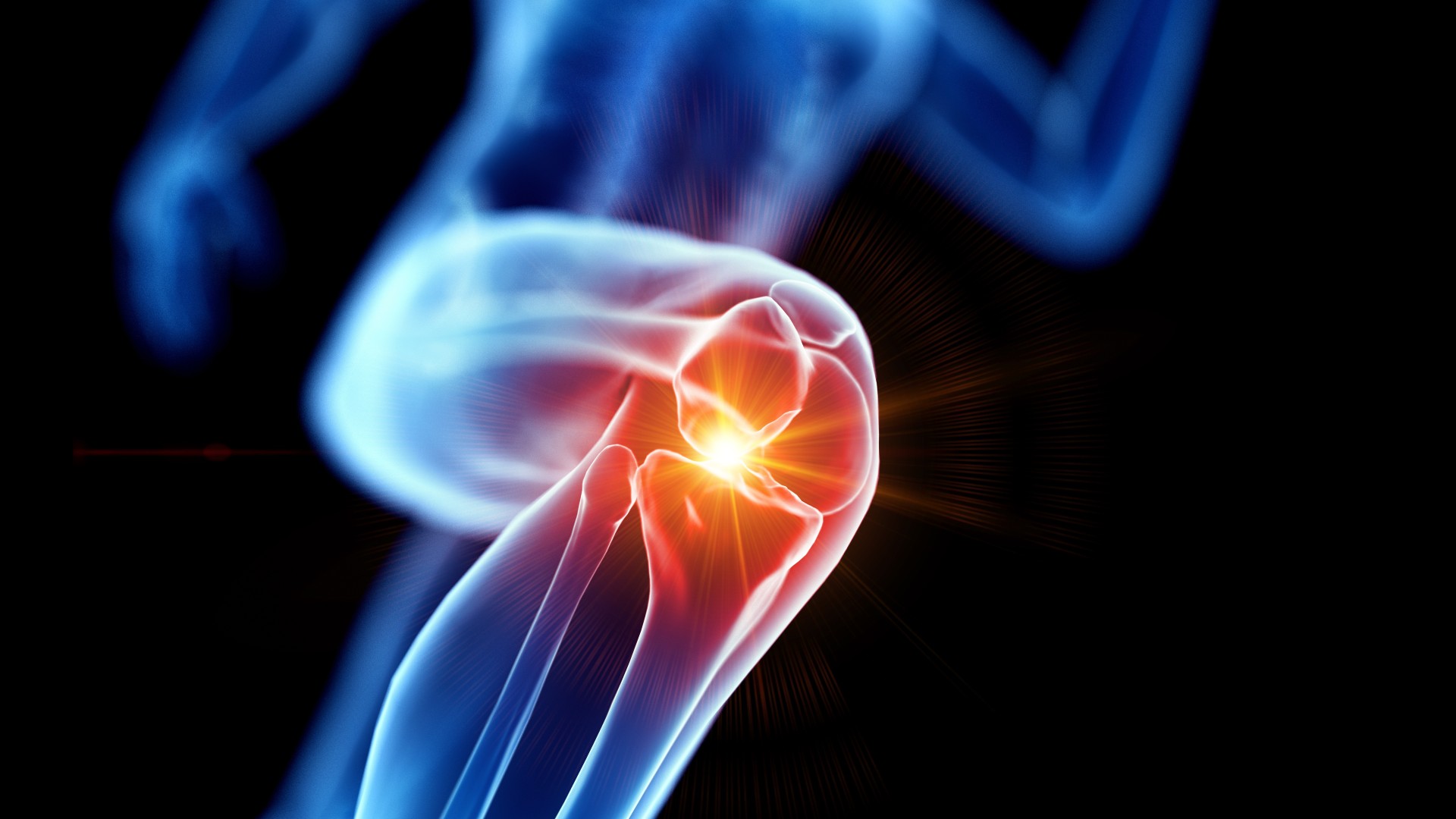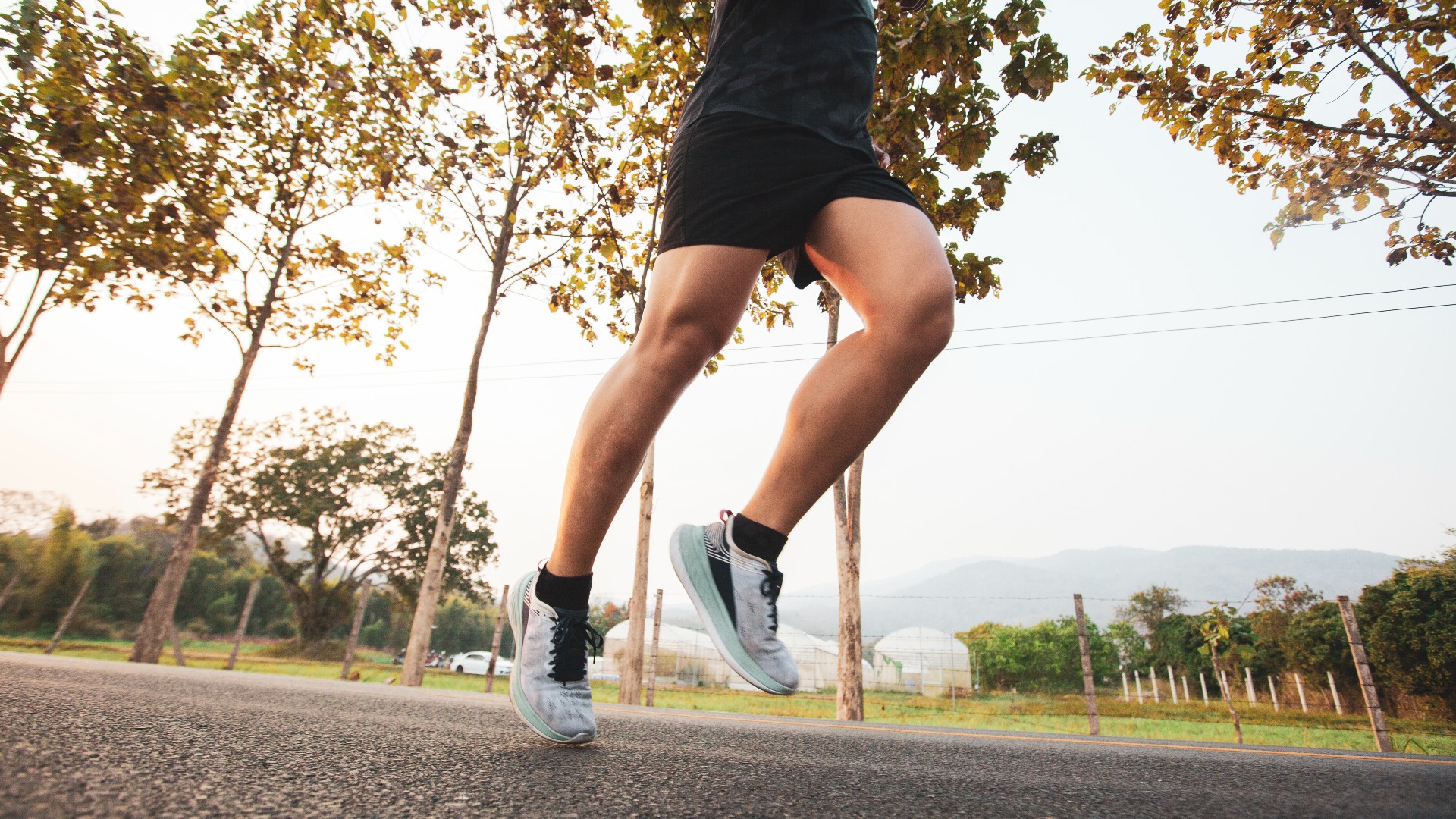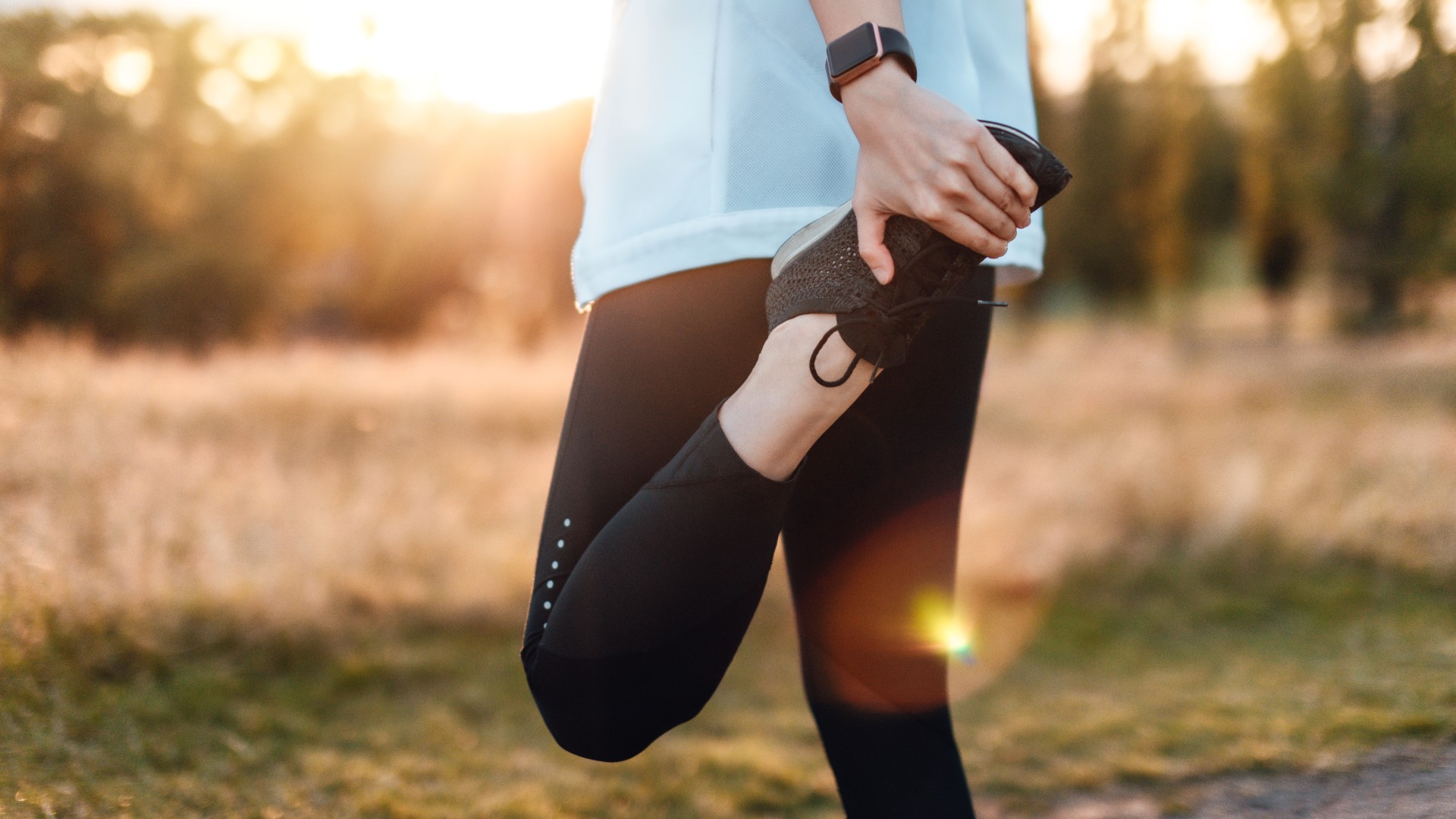
If knee pain stops your workouts, these knee strengthening exercises can help. We discuss what causes knee pain, how to prevent it, and what exercises could be causing it.
Whether you’re a runner or weight lifter, good form and strong knees will help keep you on your feet for longer. We spoke to several experts, including Dr. Bruce Paton, consultant physiotherapist at the Institute of Sport, Exercise and Health (ISEH), to learn more.
“Knees are remarkable mechanical structures, repairing themselves continuously and enabling us to be mobile for a lifetime,” Dr. Paton says. If we don’t look after them, we could suffer nasty injuries.
The current guidance on physical activity includes strength activities on at least two days of the week and even walking or taking the stairs can offer up strength gains for many. We’ve gone digging and found the most effective ways to look after your knees. Check out 6 of the best exercises for knee pain and these 5 exercises to get back to running after an injury, or read on for more.

Bruce Paton is a specialist physiotherapist with a specialisation in lower limb musculoskeletal disorders, trauma, orthopaedics and rheumatology. Research interests include: optimising rehabilitation post-injury and /manual therapies/ control of inflammation / promoting exercise and physical activity / athletic performance / and return to sport in Elite level and recreational athletes.

Nuffield Health regional physiotherapy lead, Matthew Piff, also has a Masters of Science from the University of Birmingham.

Rami Hashish obtained his PhD in biomechanics from the university of Southern California in 2014. He them worked as a clinical instructor of physical therapy for several years before founding the national biomechanics institute.
What is your knee joint?
If you’re a knee joint anatomy novice, learning its construction can help you move with more care. According to Matthew Piff, Nuffield Health regional physiotherapy lead, the knee consists of three bones — femur, tibia and patella — forming a hinge joint.

This joint is then stabilized by four major ligaments in conjunction with two major muscle groups — the quadriceps and hamstrings. The knee joint only bends and straightens.
“The main muscles around the knee help to carry body weight,” adds Dr. Paton. “These are some of the strongest muscles in the body. Other muscles in the leg like the ankle, hip rotators, adductor muscles, and gluteal muscles (especially the gluteus medius) can affect knee alignment and support the knee.”
How does knee pain occur?
According to the Orthopedic Clinic, your knees are the most stressed joints in your body and receive four times the amount of stress for every pound you weigh. That’s a lot of pressure.
“Arguably, the most common cause of knee issues is moving improperly,” says Dr. Rami Hashish, body performance and injury expert. “This may be due to your posture and anatomy, but more commonly, it’s down to a lack of flexibility or muscle imbalance. For example, quad dominance (where the quad muscles are too strong for your hamstrings) is a primary risk factor for ACL injuries.”
Sign up to get the BEST of Tom's Guide direct to your inbox.
Get instant access to breaking news, the hottest reviews, great deals and helpful tips.
He adds that the hinge joint doesn’t allow for much side-bending or rotation either, so these movements can eventually lead to injury.
According to Dr. Paton, your knee muscles adapt to your activity and range of movement, so those who get up and down and move about regularly have higher levels of knee strength. “Injuries occur when people are not sufficiently fit, prepared, equipped, or warmed up for exercise. Over-exercising in terms of frequency, intensity, or duration of sessions and insufficient recovery time after also contribute,” he says.
What are the most common knee injuries?
Common knee injuries include runner’s knee, bursitis, and IT band syndrome, Christian Allen of Runner’s Need tells us. You can find four reasons why you might get knee pain when running for more on these conditions.
“Bursitis is another condition caused when the joints that contain small fluid-filled sacs called bursa become inflamed,” says Allen. “It causes sore, tender knees that are painful when pressed on.”
Physio Piff adds that ligament sprains are common following twisting injuries or unexpected movement, causing strain and joint instability. “Osteoarthritis is another condition causing our joints to become painful and stiff,” he says. “It happens when the protective cartilage on the ends of your bones breaks down, causing pain, swelling and problems moving the joint.”
Lastly, tendinopathy refers to tendon pain (the soft tissue that connects muscle to bone) caused by repetitive movements that overload the tendon. “Pain often follows significant changes in loading, like a sudden increase in running while training for a marathon,” explains Piff.

How to avoid knee pain
Allen explains that low-impact sports like swimming and cycling can strengthen the knees.
“There are certain things you can do to prevent the likelihood of injuring your knees,” he says. “Make sure you’re wearing the right shoes. The best running shoes are your most important piece of kit, and the right pair should match your unique gait.” Gait analysis can also help ensure your running form is up to scratch, and you’re not under or over-compensating in other places.
“It’s important to stretch before and after exercise — dynamic stretches involve moving your body in a similar way to your chosen exercise. Finally, don’t push yourself too hard. Your body needs time to adjust.”
Constant knee pain can indicate overtraining, so if you fear this could be you, take a couple of days to rest and apply gentle stretching, using heat to loosen the muscles and ice to alleviate pain. Find out these 5 stretching mistakes you’re probably making.

If you aim to improve your knee strength, focus on strengthening the surrounding muscles and working on imbalances or weaknesses in underused muscles, as well as flexibility and stability work.
“For example, when doing a squat, if your knee falls inwards, it might indicate that a weakness of your gluteus medius (side glute muscle),” Dr. Hashish warns. “In other words, the cause of the problem is actually at your hip. Because the knee is a hinge joint, if it falls too far inwards or outward or rotates against your will, the root cause may be at the feet, calves, or buttocks.”
What exercises should you avoid with bad knees?
According to Allen, many people think running is bad for your knees, but (despite the possibility of injury) it isn’t usually running itself that is bad for this joint. He believes most injuries are caused by poor form, bad kit, or continuous running on very hard surfaces.
Already suffering from knee pain? Allen recommends resting up and avoiding high-impact activities that could aggravate existing symptoms. And Piff agrees. “Research shows that runners have fewer osteoarthritis changes than the general population, but exercise is relative to the state of a person’s knee,” he says. “If you already have pain, then some exercises may be more provocative than others.
If you are not well conditioned, then some exercises could overload the knee and cause pain. If you are already fit and strong, stay that way, as this is the best protective measure against future problems.” Unsure? Seek out help from a coach of physio first.
The best knee strengthening exercises
Dr. Hashish finds more often than not, addressing strength and flexibility deficits will help to improve knee joint stability and limit or eliminate pain. But how?
Dr. Paton favors exercises that involve weight bearing, like weight lifting, plyometric (explosive power) moves, and running. “These exercises typically work multiple muscle groups and joints and focus on high-load and fast-speed training,” he says.
If you’re working with existing knee pain, non-weight-bearing workouts like cycling, rowing, or swimming can be beneficial and ramp up cardio fitness gains too. Even walking or using the stairs can help if you’re inactive.
Physio Piff is a big advocate of the humble squat (learn how to do a squat) for the same reasons. “The squat is great at strengthening the major muscle groups in your leg, which is the best protective method for avoiding injury. Start slow and build up,” he advises.
If you’re after other options, Allen provides a few simple knee strengthening exercises you can do to avoid knee pain, including knee extensions (use one of the best resistance bands), wall squats, and heel and calf raises. We cover them and other brilliant knee strengthening exercises at the start of this article.
How long do knee strengthening exercises take to work?
Dr. Paton says muscles can change with training within 4-6 weeks, but a strength program can take effect sooner as the brain and nervous system ‘get better’ at switching more muscle on. “Muscles will continue to strengthen if they work to full fatigue and if exercise progresses to increase weight or repetitions.
Generally, as muscles strengthen, more weight or repetitions are needed to achieve fatigue.
When to get referred for knee pain
Allen warns that persistent knee pain could indicate an underlying cause, which is an ideal time to visit your GP or physio.
“If your knee joint seems deformed, there is a popping noise, intense pain or sudden swelling or if you’re unable to bear weight, you should seek immediate medical attention,” he advises. “You should also see a doctor if you’ve sustained a knee injury from impact and if the knee is red, tender and warm.”
There are instances where you should be able to alleviate pain yourself — usually if knee pain comes on slowly and has resulted from a lot of strenuous activity. The RICE method (rest, ice, compression and elevation) can help.
Looking for inspiration? Discover what happened when we did 100 fire hydrants a day for a week and the best exercises to do if you have sciatica.

Sam Hopes is a level 3 qualified trainer, level 2 reiki practitioner and senior fitness writer at Tom's Guide. She is also currently undertaking her Yoga For Athletes training course. Sam has written for various fitness brands and websites over the years and has experience across brands at Future such as Live Science, Fit&Well, Coach, and T3.
Having worked with fitness studios like F45 and Virgin Active, Sam now primarily teaches outdoor bootcamps, bodyweight, calisthenics and kettlebells. She also coaches mobility and stretching-focused classes several times a week and believes that true strength comes from a holistic approach to training your body.
Sam has completed two mixed doubles Hyrox competitions in London and the Netherlands and finished her first doubles attempt in 1:11.
